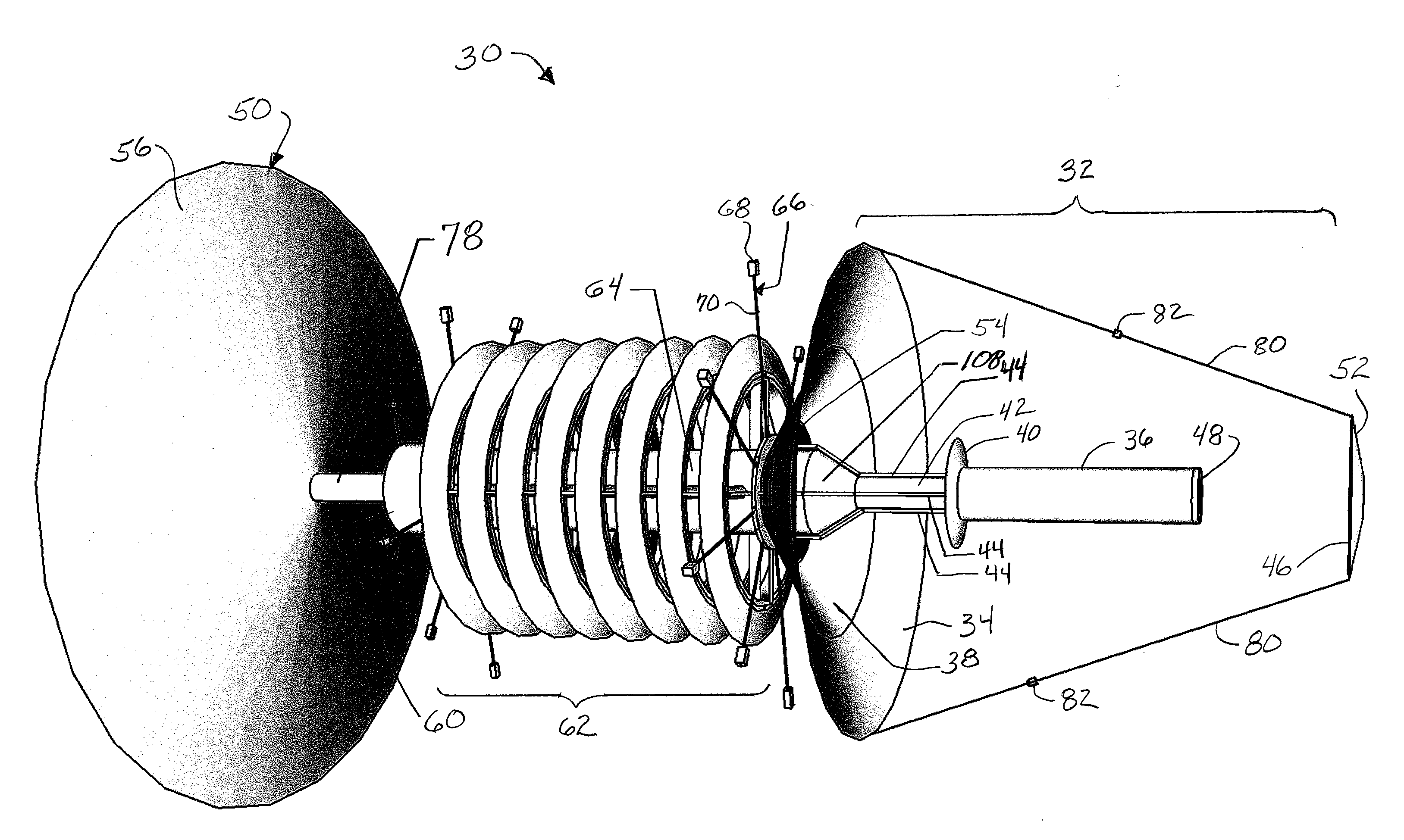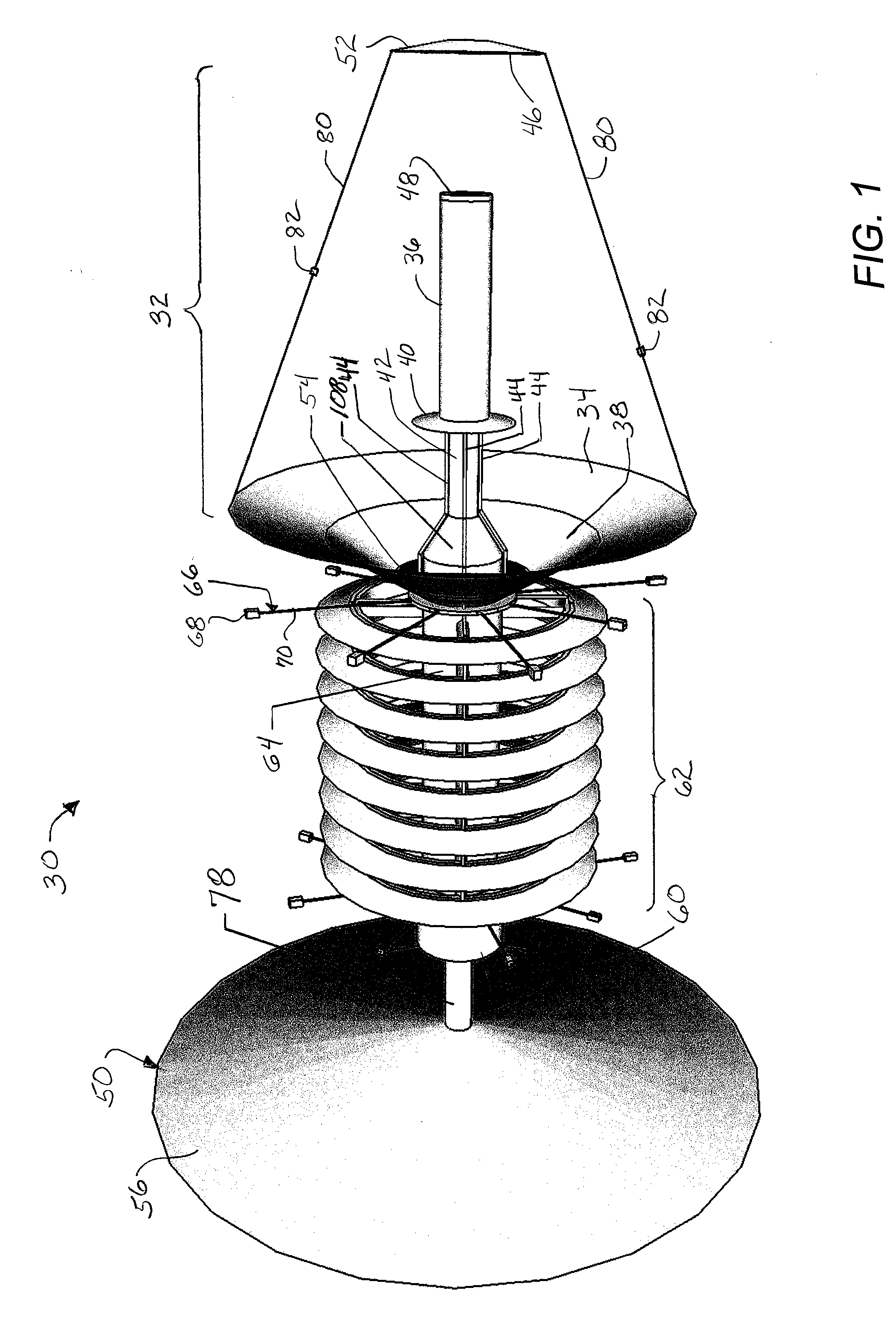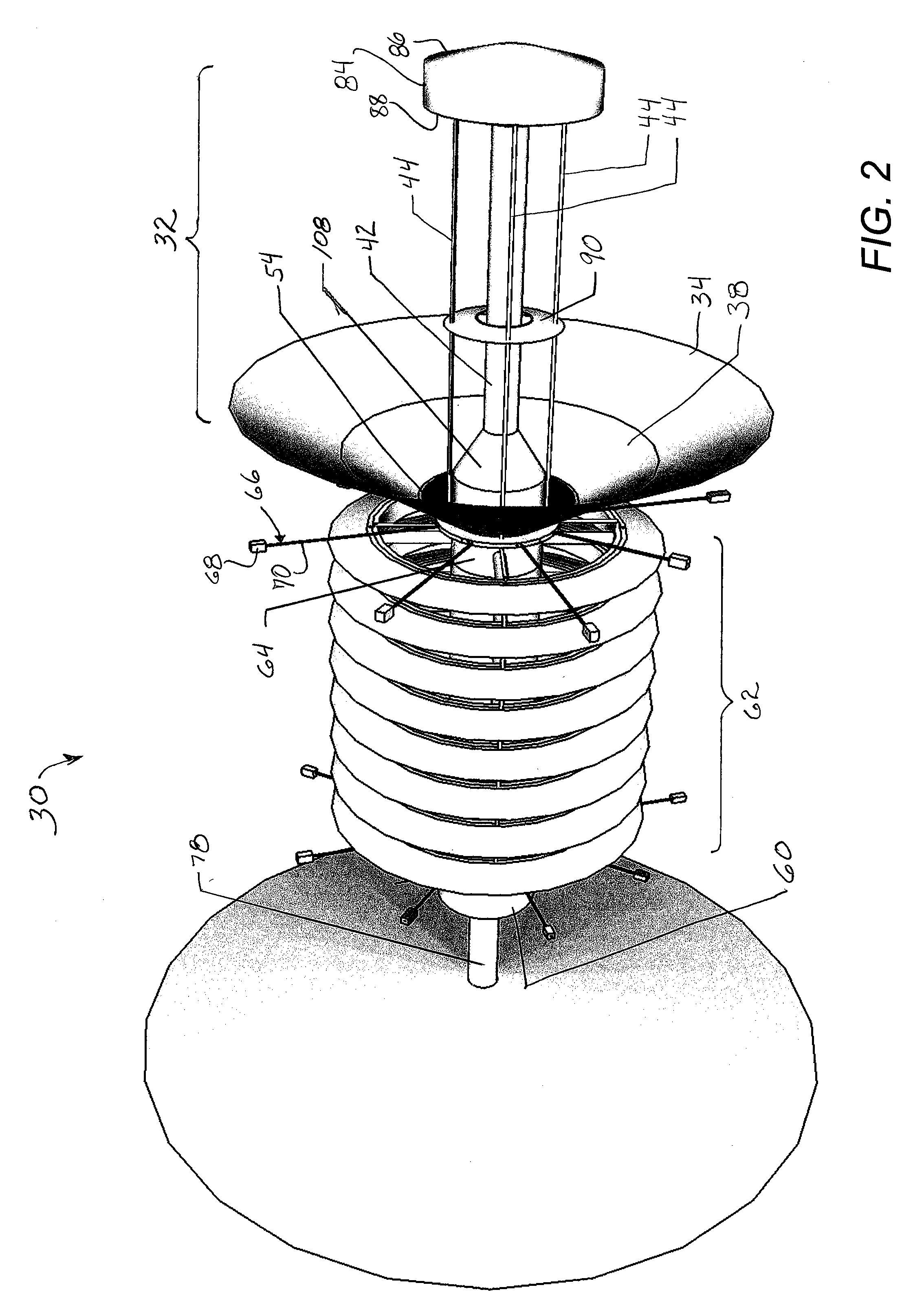Orbiting power plant
a power plant and orbiting technology, applied in the direction of electric generator control, machines/engines, mechanical equipment, etc., can solve the problems of global climate change, imbalance in earth's atmospheric composition, and threat to civilization, and the dependence on foreign oil poses a threat to the economy
- Summary
- Abstract
- Description
- Claims
- Application Information
AI Technical Summary
Benefits of technology
Problems solved by technology
Method used
Image
Examples
Embodiment Construction
[0049]Referring now in more detail to the exemplary drawings for purposes of illustrating embodiments of the invention, wherein like reference numerals designate corresponding or like elements among the several views, there is shown in FIG. 1 a frontal perspective view of an orbiting power plant 30 for generating electrical energy in a micro-gravity environment according to aspects of the invention. Although not shown, a solar radiation source would be located to the right side of the figure for providing solar radiation to the power plant. One obvious solar radiation source is the sun and in that particular application, the orbiting power plant 30 would be orbiting the earth. The terms “power plant,”“power generating system,”“power generating satellite,”“space craft,” and “space vehicle,” are used interchangeably herein and are meant to be descriptive of an embodiment or embodiments, and not meant to be limiting.
[0050]For convenience, in the following detailed descriptions of embod...
PUM
 Login to View More
Login to View More Abstract
Description
Claims
Application Information
 Login to View More
Login to View More - R&D
- Intellectual Property
- Life Sciences
- Materials
- Tech Scout
- Unparalleled Data Quality
- Higher Quality Content
- 60% Fewer Hallucinations
Browse by: Latest US Patents, China's latest patents, Technical Efficacy Thesaurus, Application Domain, Technology Topic, Popular Technical Reports.
© 2025 PatSnap. All rights reserved.Legal|Privacy policy|Modern Slavery Act Transparency Statement|Sitemap|About US| Contact US: help@patsnap.com



